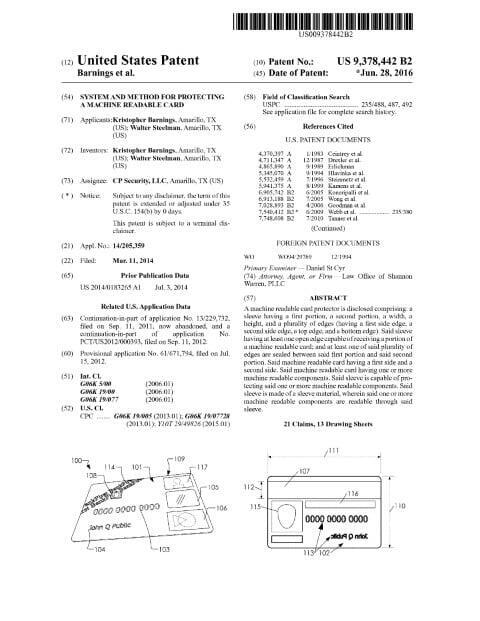
Overview
This patent describes a thoughtfully engineered protective sleeve that preserves machine-readable cards while preserving functionality. Filed on March 11, 2014 and granted on June 28, 2016, the application from inventors based in Amarillo, TX discloses a thin, non-opaque sleeve formed from polymer films (polyethylene or polyester) that is heat-sealed along selected edges and left open where needed to insert and remove a card. The design balances mechanical protection against friction and environmental wear with electronic accessibility: magnetic strips and electronic tags (RFID/NFC) remain readable through the sleeve, and an optional die-cut tag window covered by a conductive film enables tag signaling without removing the sleeve. Multiple manufacturing approaches are claimed, including RF, sonic, induction, and wire welding, with material thicknesses engineered to allow use in standard card readers while extending card service life. The drafting emphasizes manufacturability, printable graphics for branding, and non-adhesive retention so cards can be removed undamaged.
Key Features
- Heat-sealed polymer sleeve (1–3 mil range) preserving card readability
- Conductive film or conductive sleeve materials to permit electronic tag signals
- Multiple welding/assembly methods (RF, sonic, induction, wire weld)
- Graphic-printable, non-adhesive, removable protection
This patent exemplifies precise claim drafting and technical depth in both materials and manufacturing, offering a practical, industry-ready solution for card durability and secure electronic access across payments, ID, and access-control markets.
Granted: 2016-06-28



